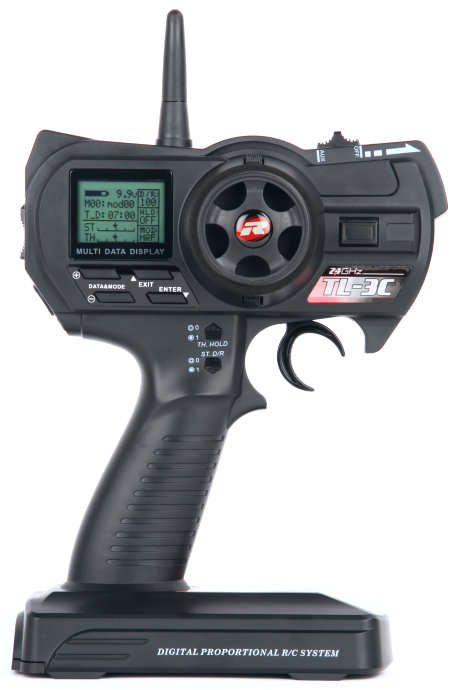Radio Controls
Radio control is the abbreviation of the word RC that you might have heard when buying or looking for RC cars, airplanes, drones or boats. If you are a new comer to the RC industry then understanding about how the RC vehicles and machines work is a great advantage and will make your experience a lot more pleasant and fun. It seems a lot of technical mumbo jumbo but it’s quite simple.
To put it really simply, your RC hobby consists of two parts. The first one is your car or airplane or whatever you are controlling and the other one is the Radio Control transmitter. It is called a Radio Control because you are “Controlling” your vehicle with “Radio” signals. So when you, for example, you push a button on your rc transmitter, it sends a signal of a specific frequency that the receiver in your vehicle receives. The receivers then translates that radio signal to electric signal and passes those signals to your movement components. Your components then do the operation accordingly. This is pretty much the basics of how your RC vehicles and machines work.
RC Transmitter
The latest rc transmitters that are available works on the 2.4 GHz frequency. Thanks to the 2.4 GHz frequency radios now you don’t have to worry about the channel frequency because, in the past, you had to use the frequency channel that no one else was using. Otherwise the signals got interrupted. But with these latest 2.4 GHz radio transmitters, you don’t have to worry about it.
4 Channels, 6 Channels, 9 Channels?
When dealing with rc transmitters, you will hear and talk a lot about channels. You shouldn’t confuse them with the channel frequencies that we talked about above because, as mentioned above, the latest 2.4 GHz transmitters handle the channel frequency issue on their own. The channel we are talking about are related to functions. In simple words, a channel is used to control a function of your vehicle. So let’s say you have a single channel rc transmitter that means it will only be able to control one function. The function might be steering, acceleration or whatever you want. Similarly a two channel radio rc transmitter will be able to control 2 functions and so on.
While using cars or boats, it’s usual to get a 2 channel rc transmitter for steering and acceleration/brake. For planes, it’s common to get a 4 channel transmitter. But that’s not the rule though, you can get a transmitter with more than 4 channels as well for more functions. That just depends on the requirements.




